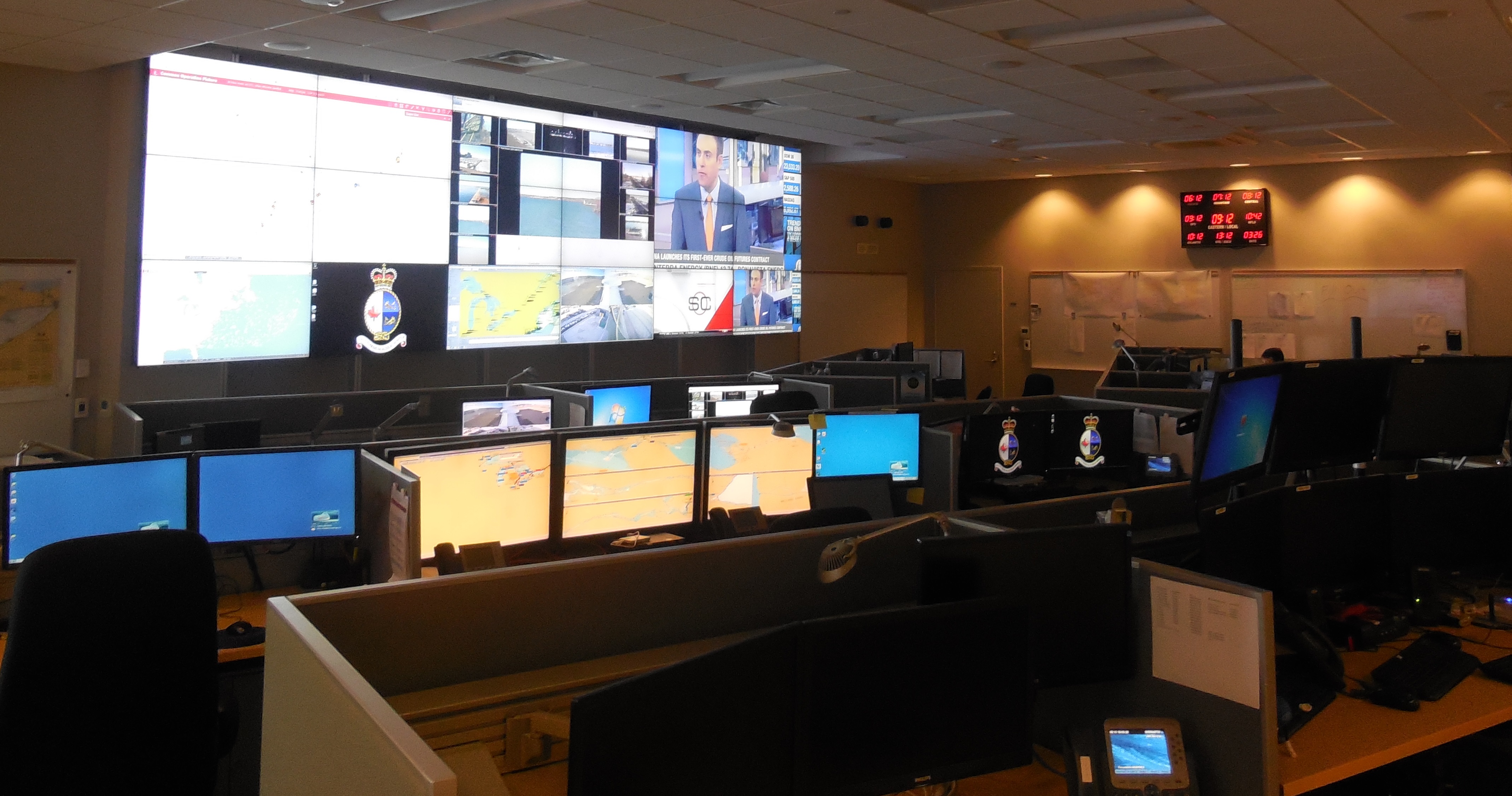From Transport Canada
The heart of Canada’s marine security operation looks like a spy agency war room right out of a Jason Bourne movie.
The “watch floors” used by Canada’s three Marine Security Operations Centres are covered by wall-to-wall screens that display marine traffic from all over the world.
Analysts study intelligence information that streams into the centres, including live video feeds from Transport Canada planes. The rooms are designed to allow key decision makers to be present to get real time information during live operations.
“These centres have been effective in preventing potential threats,” said Malick Sidibé, Transport Canada’s Director of Marine Security Operations. “All this information comes together to give us a good sense of whether we should allow a vessel to enter our waters.”
Unique Government of Canada collaboration
The centres in Esquimalt, British Columbia, Halifax and Niagara-on-the-Lake, Ontario, are part of Canada’s marine-focused defence against such threats as terrorism, espionage, drug and human smuggling. They keep watch on Canada’s marine transportation system to anticipate potential threats to the maritime industry.
To assess current and emerging marine threats, many federal departments work together in the centres. They include Transport Canada, the Royal Canadian Mounted Police, Canada Border Services Agency, the Department of National Defence, Fisheries and Oceans Canada, and the Canadian Coast Guard. This unique collaboration enables a coordinated response to potential threats.
This whole-of-government approach to marine security helps protect more than 300 commercial ports and harbours across the country. And that is significant, considering they handle roughly $210 billion worth of goods a year.
“That level of business is critical to the economy and it could be at risk if there is no security,” Mr. Sidibé said. “We are talking here about competitiveness for Canadian ports.”
The national maritime picture
Transport Canada plays an important role in detecting, assessing and facilitating response to marine threats through the centres, which monitor more than 1,000 vessels every day. The centres:
- contribute to the up-to-the-minute picture of activity off Canada’s expansive coastlines and on Canadian waterways;
- watch for threats and contribute to risk assessments of marine facilities, ports and vessels; and
- enforce marine security regulations. Each vessel has to report to Transport Canada 96 hours before entering Canadian waters. The centres can also share threat information with Canadian ships sailing in international waters where there’s a possible security threat.
Transport Canada inspectors advise marine facilities and ports about possible threats to security. Every year, the centres also conduct more than 7,000 risk assessments of vessels entering Canadian waters.
Strengthening marine transportation security on water and land
Marine Security Operation Centre staff start each day with a coordination meeting to share land and water surveillance and reconnaissance information between partner agencies to ensure a secure marine transportation system.
The Niagara-on-the-Lake Centre is different from the other centres since the United States Coast Guard and United States Border Patrol are also stationed in the building. With more than 3,700 kilometres of Great Lakes and St. Lawrence River coastline to cover, this unique collaboration enhances the security of the Great Lakes St. Lawrence Seaway on both sides of the border.
Beyond physical threats along Canada’s waterways, cyber-security is also top of mind for the centres. In the last few years, marine facilities and ports are reporting a growing number of marine cyber-security incidents. Phishing emails sent to ports or marine facilities in an attempt to access their networks is an example of a cyber-security incident.
The Marine Security Operations Centres make a significant contribution to the broader Canadian efforts to strengthen maritime security.
